POST-MICKEY MICE (5)
By:
July 18, 2023

An episode of MOUSE, a multi-part installment in the ongoing BESTIARY series.
During 2021–2022, I contributed three BESTIARY series installments, for each of which I conducted research into and offered a top-line analysis of 20th-century pop-culture depictions of a charismatic creature: OWL | BEAVER | FROG. I first developed this approach for an earlier series, TAKING THE MICKEY, which analyzes Mickey Mouse’s evolving significance. Via this new BESTIARY installment, I’ll “read” Mickey within the context of his fellow pop-culture mice.
This multipart BESTIARY series installment, collectively titled MOUSE, is divided up as follows: MOUSE (INTRO) | PRE-MICKEY MICE (1904–1913) | PRE-MICKEY MICE (1914–1923) | PRE-& POST-MICKEY MICE (1924–1933) | POST-MICKEY MICE (1934–1943) | POST-MICKEY MICE (1944–1953) | POST-MICKEY MICE (1954–1963) | POST-MICKEY MICE (1964–1973) | POST-MICKEY MICE (1974–1983) | POST-MICKEY MICE (1984–1993) | POST-MICKEY MICE (1994–2003).
(1974–1983)
According to HILOBROW’s periodization scheme, the cultural era known as the nineteen-seventies begins c. 1974 and ends c. 1983. During this period, let’s see how the mice tropes — surfaced via this audit, and dimensionalized in the series’ introduction — shake out via pop culture.

Columbia wears a MM hat in The Rocky Horror Picture Show (1975).

Robert Combas is a French painter and sculptor who helped kick off the outsider-art-esque figuration libre movement — c. 1980 — which drew on pop cultural influences in an effort to satirize or critique aspects of contemporary society. The 1978–79 artwork shown above, which is at the Centre Pompidou, suggests that Mickey is not the property of Walt Disney; he belongs to the entire world.

The Hitchhiker’s Guide to the Galaxy is a comedy science fiction franchise created by Douglas Adams. Originally a 1978 radio comedy broadcast on BBC Radio 4, it was later adapted to other formats, including novels and a 2005 feature film. Here, mice are revealed to be highly intelligent pan-dimensional beings; the little furry squeaky things we see are just their avatars in this dimension. Millions of years ago, they built the Master Computer Deep Thought as a means of discovering the Answer to the Great Question of Life, the Universe, and Everything.

Above: A 1981 artwork by Raymond Pettibon, who came to prominence around that time in the southern California punk rock scene.
Pettibon was first known for creating posters and album art — e.g., Black Flag’s Family Man, In My Head, Jealous Again; Minutemen’s Paranoid Time, What Makes a Man Start Fires?; — for SST Records, which was owned and operated by his brother, Greg Ginn of Black Flag.

In addition to the head of George Washington and references to Superman, Jean-Michel Basquiat’s 1983 drawing Untitled (Walt Disney) features an armless Mickey Mouse hanging from a noose.

Recently, the image shown above — Keith Haring’s Untitled (1983) — sold for over $4 million. Here’s an excerpt from the Bonhams catalog describing this painting:
Untitled is quintessentially Haring, whilst also being a work from a singular time in New York. Arguably one of Haring’s most complex works compositionally, it also carries a strong message. The work explodes with color, buzzing with fluorescent pink and pops of yellow. Theoretically simple in execution and only employing three colors, the work remains deeply dynamic — pulling the eye across its highly worked surface. Haring’s signature figures, characters with whom we have all become deeply familiar with [sic] in the cultural zeitgeist, can be found throughout the work: an angel, a dog and dancing figures all move, dance and jump throughout it. It also seems however to be a warning about the complications of unprotected sex. Mickey Mouse, a subject of fascination for Haring who appears throughout his oeuvre, is seen contemplating sex with a second figure, perhaps the devil. A figure wearing a gas mask, which can also be interpreted as a screw — an example of Haring’s strong ability to create double entendre — is placed between the figures of a devil and angel. The angel signaling not just an alternative to the devil — seen at the lower right-hand side of the composition with the trident, symbolically used throughout art history when depicting a demon — but also even alluding to death that might befall him from this choice.
Haring’s father, Allen, was an amateur cartoonist; as a child Keith particularly liked drawing Mickey Mouse. Haring would deploy MM not infrequently — “as a naïve, child-like figure in his works, using him to instill joy and innocence in paintings which simultaneously capture the grit and darkness of the 1980s.”
ALSO:

Eek-A-Mouse (Ripton Joseph Hylton) is a Jamaican reggae musician known for pioneering his own style of scatting, differing from the “toasting” deejays of the time. He adopted the stage name “Eek-A-Mouse” in 1979, taking the name of a racehorse he always bet on.
Including this in ABJECT OTHER because of the “eek!”

In Bob Zmuda’s book about Kaufman — specifically about the Seventies period when he was doing his “Mighty Mouse” act — he writes, “Was Andy a wide-eyed innocent? Or was he a fearless and subversive outlaw, lampooning the mediocrity of the entertainment industry? To me, his writer for ten years, he was both.” Let ’em wonder.
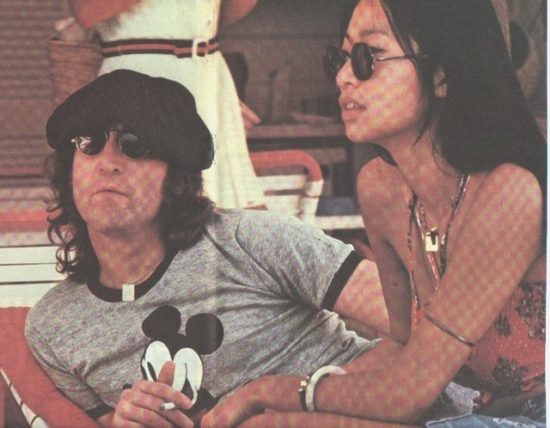
John Lennon and his assistant/lover, May Pang, took Julian Lennon to Disney World for a week in 1974. The trio stayed at the Polynesian Village Resort. While there, and while wearing a Mickey tee, John signed the paperwork officially disbanding The Beatles. Thus officially ending the Sixties.

Muncus Agruncus, a Bad Little Mouse is a 1976 children’s book by Nancy Dingman Watson (author) and Wendy Watson (illustrator).
Muncus the mouse is sort of an alliterative MM figure.
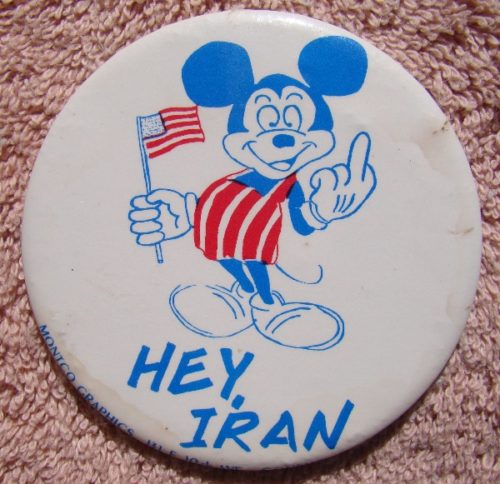
In 1979–1981, during the The Iran hostage crisis, images of Mickey Mouse flipping the bird — with the caption “Hey Iran” — became a popular meme.

Angelina Ballerina is a children’s book series by author Katharine Holabird and illustrator Helen Craig about a mouse named Angelina. She dances all the time instead of doing what she is supposed to be doing like cleaning her room or getting ready for school. Which sort of makes this a REBELLIOUS SCAMP example.
Followed by Angelina and the Princess (1984), Angelina’s Christmas (1986), and others. Angelina Ballerina is a 2001–2006 British animated preschool children’s television series based on the books.
Today’s readers are somewhat less enchanted by the original book, noting that the story of a girl full of energy who just wants to dance is a great idea, but there are more recent books that cover that theme without the regressive gender roles. Also, one of the problems solved by Angelina’s dance lessons is that she no longer runs faster than the boys chasing her….

Monty Mouse Looks for Adventure by Esta de Fossard, with photographs (of taxidermied mice) by Haworth Bartram. The 1976 sequel to Monty the Runaway Mouse.
Monty Mouse is an alliterative MM figure.

Mouse Six and the Happy Birthday, a 1978 children’s book by Miska Miles, illustrated by Leslie H. Morrill. Although Mother Mouse wants neither presents nor a party for her birthday, Mouse Six goes off with his knapsack to find her something special and causes several animals to wonder whether he is running away from home.
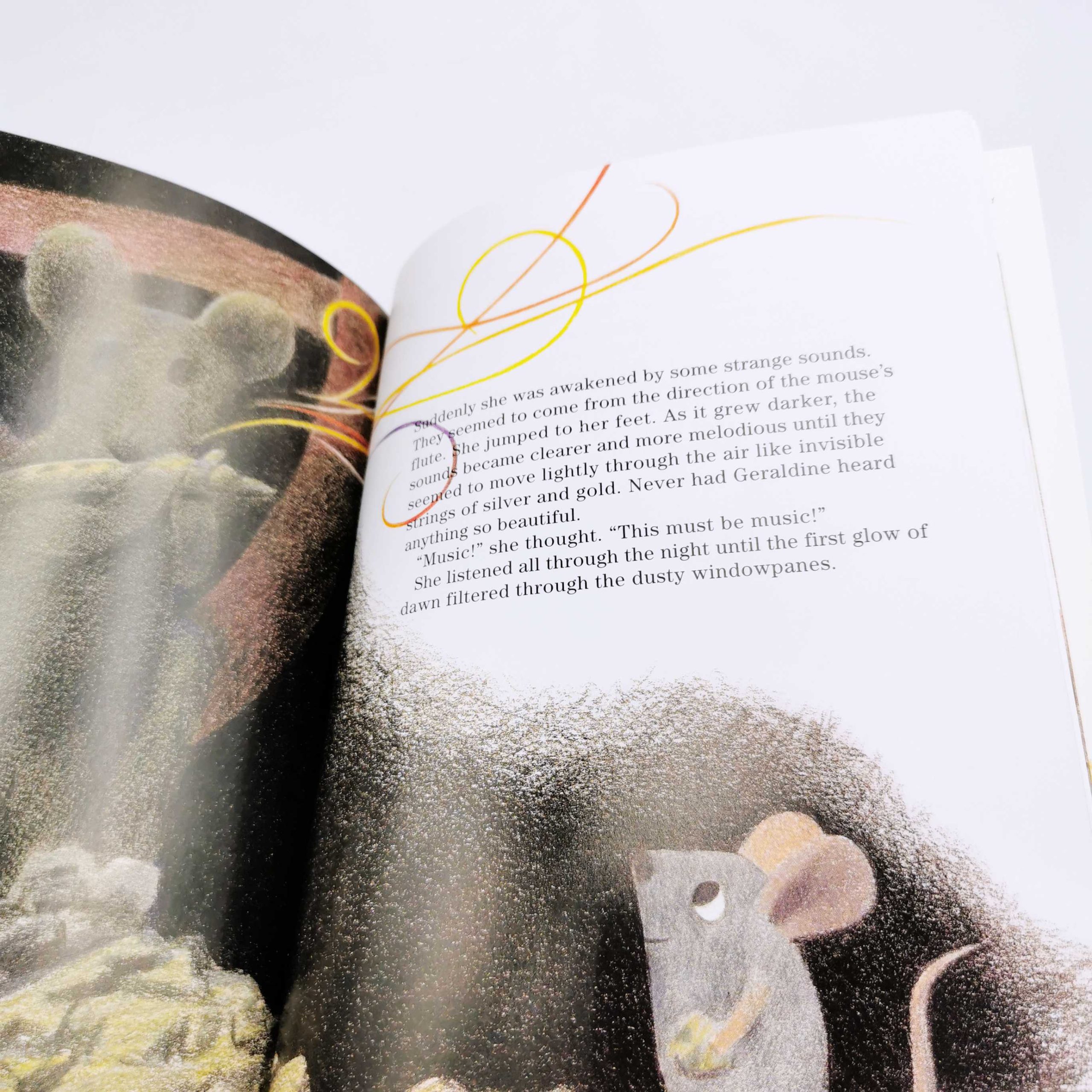
I’m including Leo Lionni’s Geraldine, The Music Mouse (1979) in this section because — like the psychonaut Mickeys we saw in the Sixties installment of this series — here we find a mouse undergoing an inner voyage. While nibbling at a huge hunk of parmesan cheese, Geraldine uncovers a statue of a mouse playing what seems to be a flute but on closer inspection is really its tail. That night Geraldine is woken by silver and gold sounds. “This must be music!” she says. And every night the cheese mouse fills Geraldine’s hideaway with beautiful music. Then one day her hungry mice friends ask her to share her cheese with them. Geraldine’s new love of music infuses her with a magic of her own.

Danger Mouse was a British animated cartoon show about a secret agent who regularly saved the world with help from his befuddled hamster sidekick, Penfold. The show, which ran from 1981 to 1992, attracted 19 million viewers at its peak. It was syndicated in 31 countries and appeared in the United States on the Nickelodeon cable channel. The show was created by Mark Hall and Brian Cosgrove for their production company, Cosgrove Hall Films. Danger Mouse was based on Patrick McGoohan’s lead role in Danger Man.
One of the first British cartoons to become popular with American audiences, the show would inspire American musician and producer, Brian Burton, who created remix CDs, to adopt the stage name Danger Mouse.


The Secret Staircase (1983) by Jill Barklem. Fifth in the Brambly Hedge series. It’s Midwinter Eve and everyone is busily preparing for the traditional midwinter celebrations. When Primrose Woodmouse finds a small key in an old wooden dresser, all thoughts of rehearsing are put aside. I think I like this book because I have recurring dreams about finding a secret room.

Karl Wirsum’s Mouse Meow (1983) gives us a kind of kick-ass cyborg mouse figure.
Technically an alliterative MM figure.

Abel’s Island is a children’s novel written and illustrated by William Steig. It won a Newbery Honor. It was published by Farrar, Straus and Giroux, Toronto, Ontario in 1976. It is a survival story about a mouse stranded on an island.
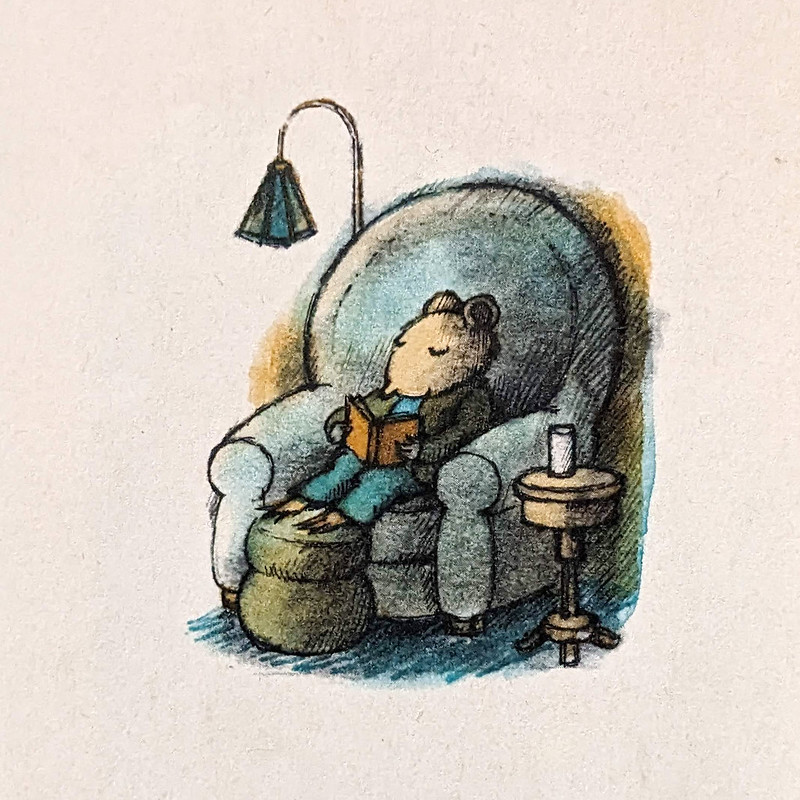
Weasel is ready for his dinner, and poor Mouse is it. Can Mouse stop Weasel from serving up mouse soup for supper? The clever mouse tells the weasel four stories to make the soup tasty — then manages to trick the weasel and get home safely.


Joseph Low’s Mice Twice (1980), about a cat that invites a mouse to dinner and is surprised by the guest the mouse brings along (a dog), was named a Caldecott honor book in 1981.

In 1972, underground cartoonist Art Spiegelman was sitting in on avant-garde moviemaker Ken Jacobs’ film class, in a session dedicated to analyzing MM’s debt to the racist tradition of minstrelsy. Jacobs “was showing Mickey Mouse’s Steamboat Willie, when he’s still a Jazz Age character rather than kind of a square, and then pointed out that Mickey Mouse is just Al Jolson with funny round ears on top, that it was kind of all a form of minstrelsy,” Spiegelman would recount. “And then I thought I really had the answer to the question, which was just, ‘All right, I’ll do [a comic] about racism in America with Ku Klux cats and mice.'” Hic incipit Spiegelman’s Maus, an early version of which first appeared that same year (see above).
Maus, in the form that was serialized from 1980 to 1991, depicts Spiegelman interviewing his father about his experiences as a Polish Jew and Holocaust survivor. The work employs postmodernist techniques and represents Jews as mice, Germans as cats, and Poles as pigs. It was the first graphic novel to win a Pulitzer Prize.
I realize it’s bizarre to sandwich Maus into this section… but these are the metaphors with which Spiegelman was playing.
Maxwell Mouse Follies (1981) #1 — story, art and cover by Joe Sinardi. Mouse-about-town Maxwell runs a Manhattan nightclub; this comic describes his musical misadventures during the Great Depression. The comedic storylines are occasionally punctuated with musical interludes, complete with lyrics.
Maxwell Mouse is an alliterative MM figure.

Mouse Trap is a maze video game developed by Exidy and released in arcades in 1981. It is similar to Pac-Man, with the main character replaced by a mouse, the dots with cheese, the ghosts with cats, and the energizers with bones.

Mappy is an arcade game by Namco, originally released in 1983 and distributed in the United States by Bally Midway. Running on the Namco Super Pac-Man hardware modified to support horizontal scrolling, the game features a mouse protagonist and cat antagonists, similar to Hanna-Barbera’s Tom and Jerry cartoon series. The name “Mappy” is likely derived from mappo (マッポ), a slightly pejorative Japanese slang term for policeman.
Mappy the mouse is sort of an alliterative MM figure.

In Robert Kraus’s 1974 children’s book Pinchpenny Mouse, the Welsh mice workers are exploited by the factory owner and spend what little money they have. When the factory goes broke they run to the miserly Pinchpenny for help. With the money he has saved he buys the factory and employs them all.

Pispisa Khanim ve Sichan bey (Miss Pispisa and Mr Mouse), also known as Tig-Tig Khanim, is a 1974 Soviet animated short by Masud Panahi and Aghanaghi Akhundov. The animation was based on Abdulla Shaig’s “Tig-tig khanum” fairytale published in 1910
Tig-tig Khanum is a lonely insect who is searching for a friend. After altering her looks, she meets a human shepherd and asks him if they can be friends and what he would do if she makes him angry. He responds that he would hurt her with his flute, so she rejects the shepherd. Tig-tig finds a wolf and also asks him for friendship, but the wolf threatens to chew her if he gets upset, so she rejects the wolf. Tig-tig then finds Mouse bey, who accepts her friendship and won’t harm her if he gets angry. They dance at a wedding ceremony with the song “Nalbaki” played by the mice.

A girl with a hearing problem learns that her struggle to overcome her handicap has made her a stronger and happier person.

The memoirs of a literary mouse living at the court of Elizabeth I reveal the public and private life of the Queen and her courtiers. Written by a 12-year-old girl with a flair for telling a story and a maturity beyond her years.
As an adolescent, Ms. Sheedy had some of her other works published by the Village Voice, Ms., and Seventeen magazine. Putting aside her writing career she went on to become Brat Pack actress Ally Sheedy.

In Bernard Stone’s Emergency Mouse (1978), a young boy who is hospitalized discovers that a group of mice operate a hospital of their own in his room at night. Illustrated by Ralph Steadman.
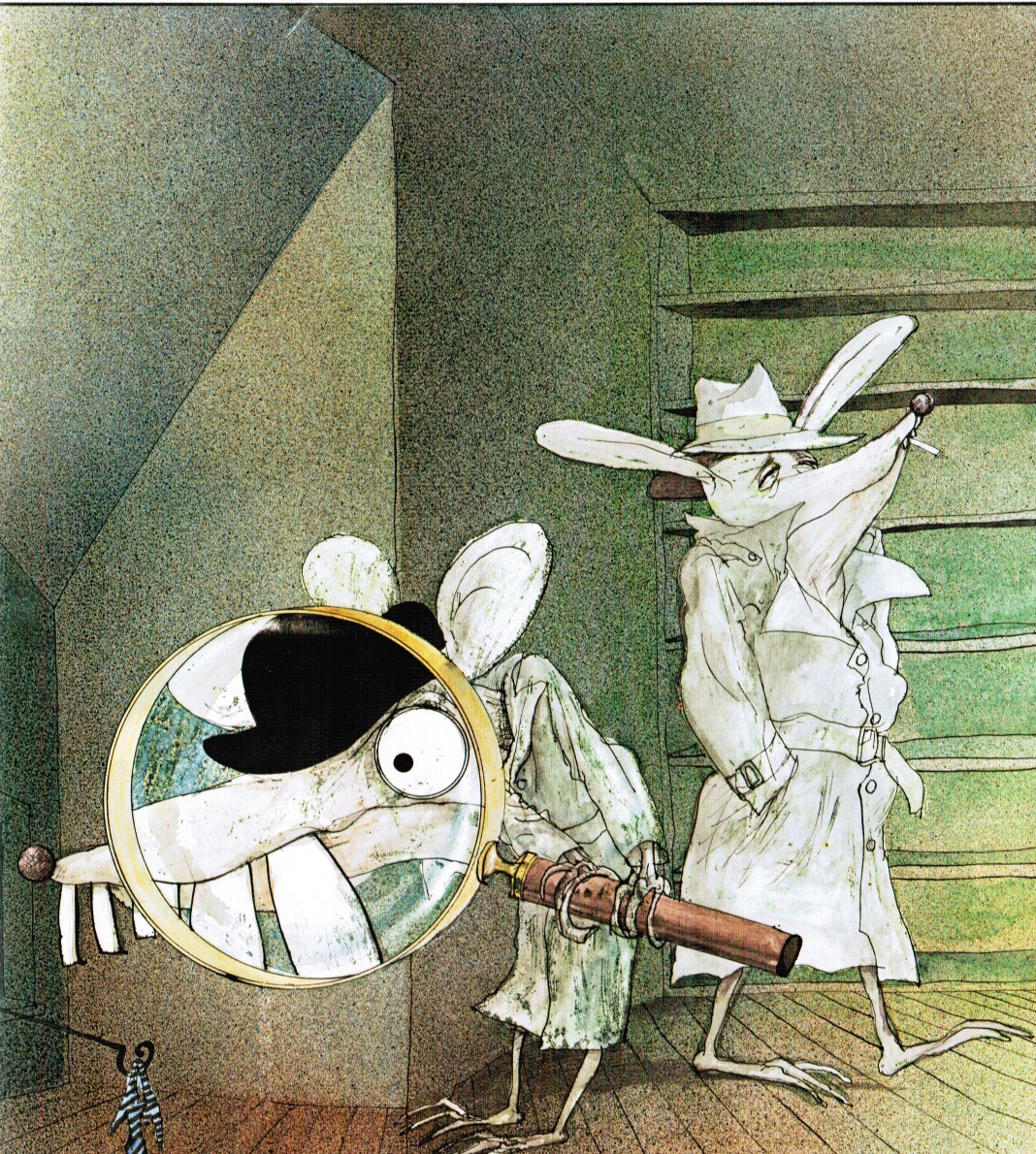
Inspector Mouse tracks down a gang of cheese thieves, who plan to rob a special shipment of Limburger — in Bernard Stone’s 1980 children’s book Inspector Mouse, illustrated in the gonzo style by Ralph Steadman.

Doctor De Soto is a 1982 picture book for children written and illustrated by William Steig. Doctor De Soto never treats any animals that are dangerous to mice. However, he decides to treat a fox with a bad tooth. Will he and his wife regret it? Steig and his book won the 1983 National Book Award for Children’s Books in category Picture Books, Hardcover.
The plot of the book bears many similarities to a fable by Aesop regarding a wolf and a crane; in both stories, a predator has trouble with their mouth or throat, and requires the aid of another animal to place themselves inside the jaws of the beast.

Joan Miro’s Mouse admiring the moon, a 1975 lithograph.

There’s a 1977 boardgame from Milton Bradley called Sammy The White House Mouse Game…


Scouse the Mouse is a children’s album released in the UK in 1977. Ringo Starr voices the album’s main character, Scouse the Mouse, who emigrates from Liverpool to the United States. Starr’s tracks: “I Know a Place”, “S.O.S.”, “A Mouse Like Me”, “Living in a Pet Shop”, “Scouse’s Dream”, “Running Free”, “Boat Ride” and “Scouse the Mouse.” An animated television version of the story was planned, but never materialized.
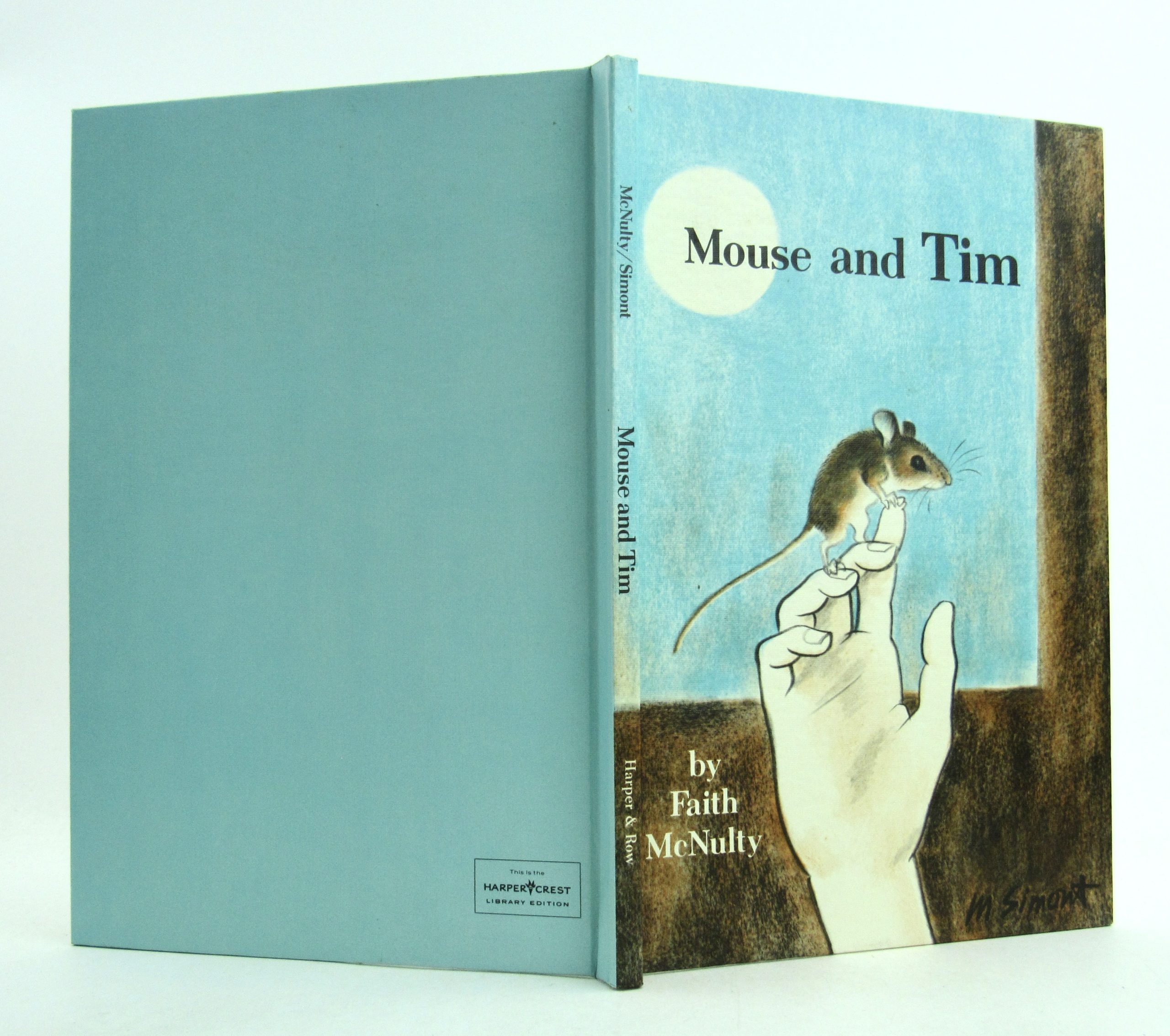
Mouse and Tim is a 1978 children’s book by Faith McNulty. An endearing story about a boy who finds a lost field mouse in his family’s barn. He takes it to his room and takes care of it until it is time for the mouse to be set free.

Poster for the cult classic movie Eating Raoul (1982).

The Secret of NIMH is a 1982 American animated fantasy adventure film directed by Don Bluth in his directorial debut and based on Robert C. O’Brien’s 1971 children’s novel, Mrs. Frisby and the Rats of NIMH. (Bluth previously worked at Disney, and was animation director for The Rescuers — another mouse movie. Also see the next installment for An American Tail.)
The film rights to the book Mrs. Frisby and the Rats of NIMH had reportedly been offered to Walt Disney Productions in 1972, but they were turned down. Too dark.
INTRODUCTION by Matthew Battles: Animals come to us “as messengers and promises.” Of what? | Matthew Battles on RHINO: Today’s map of the rhinoceros is broken. | Josh Glenn on OWL: Why are we overawed by the owl? | Stephanie Burt on SEA ANEMONE: Unable to settle down more than once. | James Hannaham on CINDER WORM: They’re prey; that puts them on our side. | Matthew Battles on PENGUIN: They come from over the horizon. | Mandy Keifetz on FLEA: Nobler than highest of angels. | Adrienne Crew on GOAT: Is it any wonder that they’re G.O.A.T. ? | Lucy Sante on CAPYBARA: Let us gather under their banner. | Annie Nocenti on CROW: Mostly, they give me the side-eye. | Alix Lambert on ANIMAL: Spirit animal of a generation. | Jessamyn West on HYRAX: The original shoegaze mammal. | Josh Glenn on BEAVER: Busy as a beaver ~ Eager beaver ~ Beaver patrol. | Adam McGovern on FIREFLY: I would know it was my birthday / when…. | Heather Kapplow on SHREW: You cannot tame us. | Chris Spurgeon on ALBATROSS: No such thing as a lesser one. | Charlie Mitchell on JACKALOPE: This is no coney. | Vanessa Berry on PLATYPUS: Leathery bills leading the plunge. | Tom Nealon on PANDA: An icon’s inner carnivore reawakens. | Josh Glenn on FROG: Bumptious ~ Rapscallion ~ Free spirit ~ Palimpsest. | Josh Glenn on MOUSE.
ALSO SEE: John Hilgart (ed.)’s HERMENAUTIC TAROT series | Josh Glenn’s VIRUS VIGILANTE series | & old-school HILOBROW series like BICYCLE KICK | CECI EST UNE PIPE | CHESS MATCH | EGGHEAD | FILE X | HILOBROW COVERS | LATF HIPSTER | HI-LO AMERICANA | PHRENOLOGY | PLUPERFECT PDA | SKRULLICISM.


